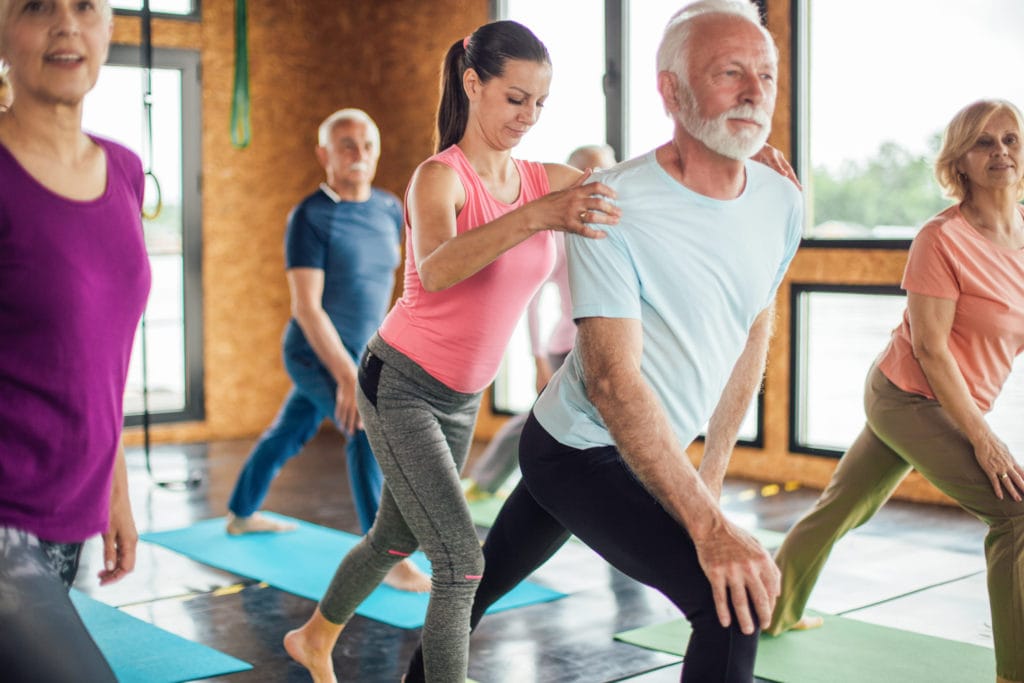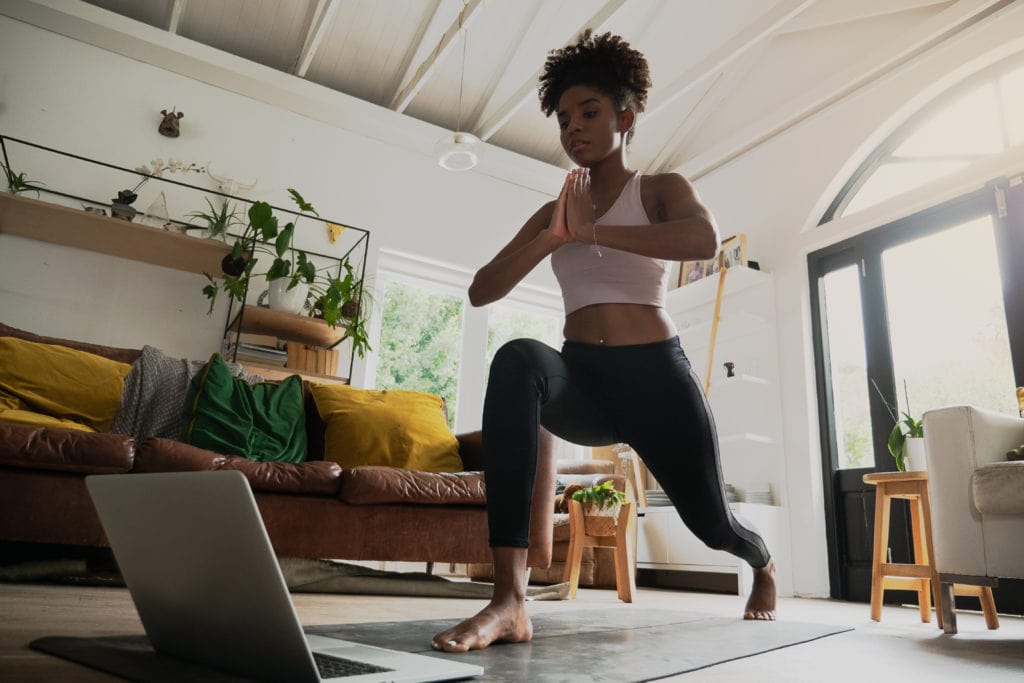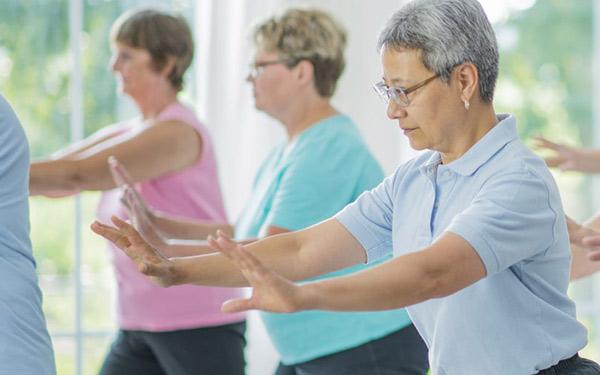Yoga and Osteoporosis: Suggestions for Safe and Appropriate Practice – Part 2

Yoga has many benefits to mind, body and spirit. But for someone with osteoporosis or at risk of a broken bone, there are some movements that should be modified or avoided.
You should modify any postures or movements that:
- make you bend your spine forward, backward or twist as far as you can (example: rag doll)
- are done in sitting (example: seated twists)
- force your hip into full rotation (example: pigeon)
- are repetitive (doing a movement over and over – example: rolling like a ball)
- rapid (moving quickly – example: jumping your feet to your hands from downward facing dog)
- weighted (holding a weight or something heavy while you do the movement – example: Russian twist with a dumbbell)
- any of the above in combination (e.g., repetitively bending forward as far as you can)
Sometimes it is not the end position that is the problem, it is how you get in and out of the position. For example, downward facing dog encourages a straight back and is a safe posture to do with osteoporosis – but, it is dangerous for your spine to get out of the posture by jumping your feet to your hands and rolling up through your spine.
A better way to transition out of downward facing dog is to drop to your knees. Come into standing by bringing one foot forward into a kneeling position and push up into standing, keeping your back tall and straight. If that is difficult or your balance is wobbly, then do it next to a wall or very sturdy chair. Downward facing dog is best done with a qualified yoga instructor to make sure it is done correctly.
You need to modify these movements because they put a lot of pressure on your spine and hip bones in ways that increase your risk of breaking a bone. Since osteoporosis already makes your bones more likely to break, you should try to decrease any other factors that could cause them to break. Modifying the movements listed above may help decrease your risk for a broken bone when practising yoga.
Here are some suggestions for yoga postures to continue to do, to avoid and to modify. This is not an exhaustive list but will help give you an idea of what you might need to start or stop doing. If you are uncertain, contact a physiotherapist for advice.

Yoga postures you can continue to do with proper instruction and guidance
- Corpse
- Bridge
- Warrior
- Mountain
- Chair
- Crocodile
- Sphinx
- Locust
Yoga postures you should avoid:
- Spinal rocking
- Rag doll
- Saw
- Plow
- Pigeon
Yoga postures you should continue to do with proper guidance, instruction AND modifications:
- Twists – don’t go as far as you can, do them lying down instead of sitting: in a knees-down twist lying on your back, rest your knees on a nearby wall or folded blanket so you don’t go too far
- Child’s Pose – put a yoga block under your head or place your forehead on stacked fists to avoid a rounded back
- Thread the needle – do it lying on your back, keep your head down on the ground to avoid a rounded back
What about props? Props should only be used when they help you make the posture safer or more aligned but shouldn’t be used to help push you further or deeper into a position. For example, you could use a sturdy chair to help you do a modified downward facing dog, but you shouldn’t use a yoga strap to help pull you further into a forward bend.
Chair yoga may be appropriate in some situations but could increase the risk for spine fracture if not done carefully. If you are very unsteady on your feet or are unable to get down to the ground, then chair yoga could be an option. However, you must be very cautious about alignment since all the yoga postures in chair yoga will be done in a seated position. Sitting puts a lot of pressure through the bones in the back, increasing the risk for a broken bone. Sitting and bending or twisting increases the risk even more. If you are doing chair yoga, you should be especially careful to modify bending or twisting the spine and focus more on postures that encourage a straight or lengthened spine. Standing or lying down are better positions to be in if they are safe for you. Hot yoga can cause people to overstretch into unsafe positions and should be avoided for people with osteoporosis.
With the guidance of an exercise professional who is trained to work with people with osteoporosis, yoga can be safe, beneficial and enjoyable. Remember to seek out a yoga instructor that has training to help you make modifications and a class that is appropriate for you, and to practise at your own level.
For more information on exercise for strong and healthy bones click here.

Written By
By Dr. Caitlin McArthur
Registered Physiotherapist, PhD
As featured in COPN’s Unbreakable Issue 14
